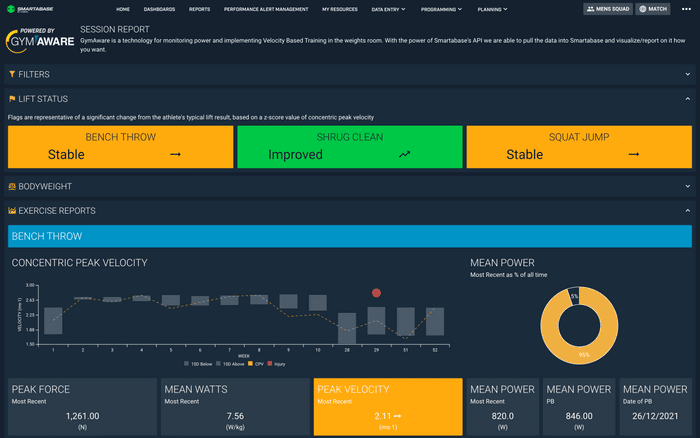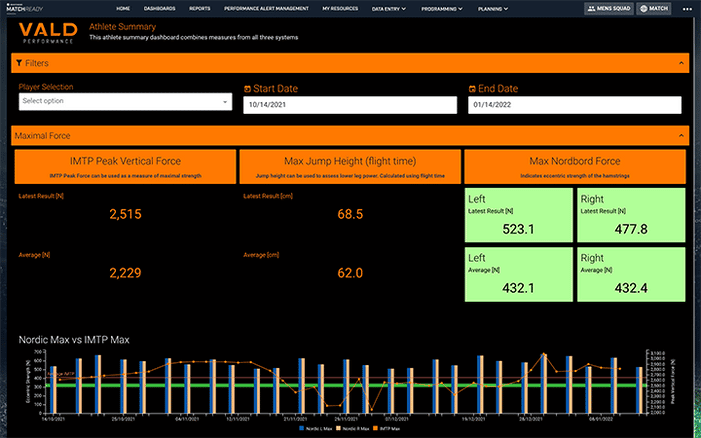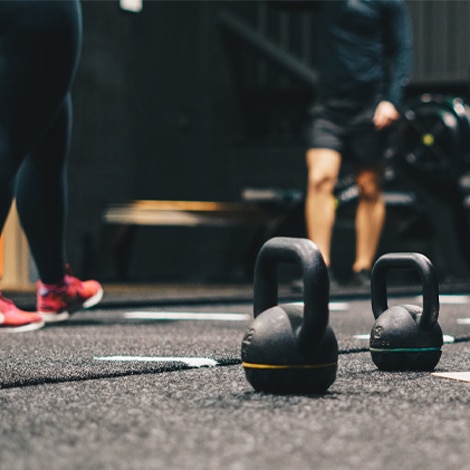By Mike Lacina
As well documented World Series wins by the Boston Red Sox, Kansas City Royals, and the Chicago Cubs show, creating a winning culture, having strong leadership, and putting together a roster of high-character personnel goes a long way in baseball. Clubs are also finding new competitive advantages through the collection, interpretation, and application of player data. This becomes even more potent when devices and other inputs are integrated into an athlete management system like Smartabase.
Workload Monitoring and Technique Training
Technology: TrackMan, Diamond Kinetics, and Rapsodo
Keeping baseball players healthy and performing at their best requires detailed load monitoring, particularly for pitchers. Systems like TrackMan, Diamond Kinetics, and Rapsodo enable the performance team to keep tabs on players’ overall workload and the volume, intensity, and density of each session to ensure that they’re not becoming overloaded, which could lead to a drop off in games, compromise their health, and even predispose them to injury.
TrackMan also allows teams to gather many data points about each pitch, such as the spin, break, release height, trajectory, and the strike zone where it’s landing. These details are very useful when working with pitchers in the bullpen. If a player is trying to develop a certain pitch and the coach is making technique suggestions, it’s valuable to objectively track the changes these lead to. For example, a small alteration such as a change in finger placement could add several hundred RPM to the spin or make the ball break harder. All of this can be assessed in TrackMan.
When a pitcher is coming back from injury or dealing with persistent arm fatigue, it’s vital to know how many pitches they throw and at what intensity. For example, they might be limited to a 30-pitch bullpen. With Trackman feeding data to an iPad, a staff member can keep count of how many pitches the pitcher throws in warmups and then at game speed, and what type of pitches they are. Then afterward the player could review the data with their coach and see where they’re currently at, how they’re making improvements, and what they need to work on going forward.
Rapsodo can track pitches, too, and is very useful for assessing hitting in a cage or tunnel. The ball only goes so far in the cage before it hits the net, so it’s harder for coaches to evaluate batting practice. Rapsodo shows 3D ball flight and landing location so players know where each hit would’ve ended up on a real field. The system measures launch angles off the bat and hit angles and compares these to ideal ranges for home runs and other kinds of hit to inform changes in swing mechanics. It also monitors exit velocity, which can be helpful for healthy players and those returning from injury who are trying to regain full torso rotation and bat speed. Tracking the type and total number of hits per session can also ensure that a rehabbing player isn’t doing too much too soon and that healthy players keep their workload within a certain threshold.
Diamond Kinetics SwingTracker is a versatile swing analysis tool that can be utilized by placing a sensor on the knob of a player’s own bat or via the company’s Smart Bat. It provides a 3D swing plane and path that can be synched with session metrics for an even more advanced analysis. To enhance pitching coaches’ expertise with objective data, Diamond Kinetics PitchTracker offers a similar system via a sensor embedded in a smart baseball. The system captures ball velocity and spin rate, direction, efficiency, and six other metrics. It also displays the pitch delivery duration and the time to plate.
Strength and Power Profiling and Development
Technologies: VALD, Hawkin Dynamics, and GymAware
Baseball might not require the same level of aerobic fitness as a sport like soccer or basketball, but it does necessitate players to produce bursts of strength, power, and speed, and to have sufficient conditioning to repeat these efforts over nine innings over the course of a long, game-packed season. This is why it’s advantageous for teams to create a physical profile for each player in Smartabase that includes strength and power benchmarks. They use force plates from VALD or Hawkin Dynamics to assess lower body power in jump tests. When first coming into spring training, the results help set baselines for the rest of the season that the strength and conditioning (S&C) coach can use to inform programming. Metrics include vertical jump height, eccentric and concentric force production, and ground contact time for repeated jumps.

Once benchmark metrics have been collected for every player, they incorporate strength and power work into their gym training. GymAware provides velocity and speed targets for each exercise to help ensure that players are making the most of each rep and set, and can be overlaid with weekly force plate testing data in Smartabase to offer more complete monitoring of strength and power. Such regular assessments also enable staff to flag a player if their output drops too far below their usual standards and provide a conversation starter when intervention is needed.
Physical Screening/Injury Monitoring
Technology: VALD and KangaTech
Another kind of testing that’s really valuable in baseball is physical screening and injury monitoring. Much like strength and power profiling, this is first conducted during spring training to assess where each player is at when they report to the team facility. With today’s technology, it’s easy to assess just about any part of the body and a wide range of movement patterns, but two of the joints that are of greatest interest to the performance staff and medical practitioners are the shoulders and hips, as these bear the brunt of a lot of force production and absorption in baseball.

Systems like VALD’s ForceFrame and KangaTech’s KT360 evaluate neuromuscular strength, control, and endurance in the muscles surrounding these joints. Athletic trainers, physical therapists, and strength and conditioning coaches can also use them to evaluate players’ mobility and range of motion to complement manual testing and screens such as the FMS. This allows them to accurately assess adduction, abduction, flexion, extension, and external and internal rotation in the hips and shoulders. As throwing is a unilateral motion, a player might have great external rotation but limited internal rotation in one shoulder and the opposite in the other. Spring training is a great opportunity for such initial testing. Once the data is in Smartabase, it can then be flagged if an existing asymmetry changes significantly during the season or a new one develops.
Coming off the bases fast is a common way for a player to strain a hip adductor or hamstring, both of which can become lingering issues. Using the ForceFrame or KT360 to evaluate the hips and VALD’s NordBord to do the same for the hamstrings ensures that squad members have sufficient strength and resiliency in this muscle group to withstand such in-game forces. These platforms can also measure bilateral motion, as players have to be able to turn and sprint in multiple directions.
Motion Capture
Technology: DARI Motion and 4D Motion
More baseball teams than ever before are using motion capture to assess players’ biomechanics. The 4D Motion systems allow the performance team to record three-dimensional movement using a series of small sensors placed on the individual’s body, while DARI Motion does the same with a markerless system – meaning there’s no hardware on the player during the analysis. Both are used to assess baseball-specific motions such as swing plane and bat path for batting and pitching mechanics. This could include how arm slot corresponds to speed, spin, and break during the pitching motion and what changing lead elbow, knee, and hip angles does to alter the ball’s velocity off the bat. This is beneficial to identify technique errors so that players are maximizing their potential on the field. Sometimes a player understands a coaching cue but cannot implement it because of a mechanical limitation. Motion capture can help spot this kind of issue, whether the player is throwing, hitting, or performing a different motor pattern.
From a biomechanical standpoint, motion capture also helps athletic trainers, S&C coaches, and other staff evaluate joint mobility and alignment, kinematic chain sequencing, and injury risk. In addition to tracking baseball-specific movements, DARI Motion and 4D Motion can assess jumping, running, and other athletic movements to see if a player has the potential to get faster or more powerful just by altering their mechanics. When someone is returning from Tommy John surgery or struggling with thoracic outlet syndrome, motion capture can detail how their mechanics have been affected by comparing current video footage and stats to previous analyses. This discovery process gives coaches and medical practitioners the chance to work with players on dysfunctional movement patterns, overcorrections, favoring the non-injured side, and so on.
Baseball Operations
Technology: eBIS2
While the most advanced baseball technology is focused on player performance, there are also administrative systems that help the front office manage logistics. One widely used example is Major League Baseball’s electronic baseball information system, eBIS2. It enables seamless workflows between the 30 MLB clubs and the Office of the Commissioner so that they can more easily keep track of transactions and other operations that used to be managed in multiple separate databases.
Each major league club has four minor league teams affiliated with it and as players are sent up and down often between the majors, AA, and AAA, it used to be a logistical nightmare to keep track of who was going where, when, and for how long. Often a player only has 24 hours’ notice before having to report to a new team, and personnel used to be surprised to see someone show up at the facility before they were officially notified. Utilizing eBIS2 makes it easier to monitor this continual player movement. The system also handles waivers, trades, and player and staff contracts, as well as facilitating the Amateur Draft. Integration with Smartabase means that when a change is made in eBIS2, it’s automatically updated in the AMS, removing the need for redundant effort, and eliminating synching conflicts.
Smartabase Integrations
The Smartabase human performance platform serves as the central hub for all your performance, health, and medical data. To learn more about all the available integrations, visit fusionsport.com/smartabase/data-aggregation.








